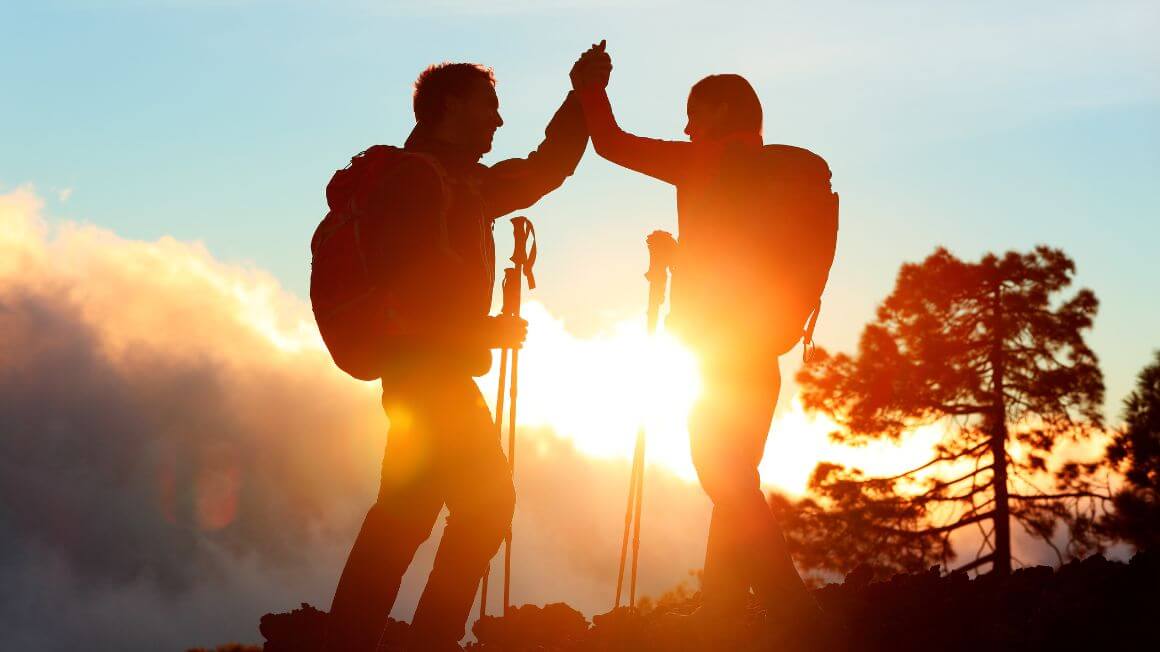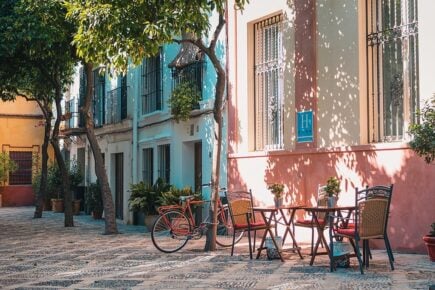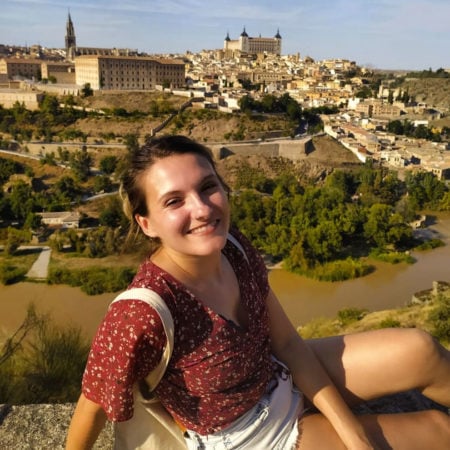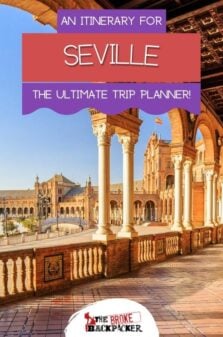With buzzing Flamenco bars and plazas framed by orange trees, Seville is the kind of holiday destination that never fails to charm! Whether you’re crossing lively public squares towards UNESCO World Heritage Sites or soaking up the atmosphere as the sun sets, the activities on our Seville itinerary will set you up for an unforgettable vacation!
There’s so much to take in throughout the Andalusian capital but Seville’s gentle pace will constantly remind you to take things easy! Seville has been through the hands of the Phoenicians and the Moors before it joined Spain. All these cultures have left a mark of this sunny city, making this city an unassuming cosmopolitan melting pot in southern Spain!
With architecture galore and plenty of stops for local tapas, our itinerary is the kind that steals your breath away with its fabulous sites and easy pace much like Seville itself!
- A Little Bit About This Seville Itinerary
- Where To Stay In Seville in 2 Days
- Day 1 Itinerary in Seville
- Day 2 Itinerary in Seville
- What To Do With More Than 2 Days in Seville
- Best Time To Visit Seville
- How To Get Around Seville
- What To Prepare Before Visiting Seville
- FAQ on Seville Itinerary
- Final Thoughts
- Buy Us a Coffee!
A Little Bit About This Seville Itinerary
There are plenty of attractions in Seville to capture your attention and atmospheric parks to soak up the Spanish sun! Whether it’s just a weekend in Seville or much longer, we have the perfect Seville itinerary for you!
Note that the main attractions get very busy. It is always worth booking ahead for La Real Alcazar of Seville.

Unlock Our GREATEST Travel Secrets!
Sign up for our newsletter and get the best travel tips delivered right to your inbox.
2 Day Seville Itinerary Overview
Day 1 in Seville: Real Alcazar | Seville Cathedral | La Giralda Bell Tower | Cobbled Streets | Parque de Maria Luisa | Plaza de Espana
Day 2 in Seville: Metropol Parasol | Museum of Fine Arts | Torre del Oro | Restaurante La Casa del Tesorero | Royal Tobacco Factory | Flamenco Dancing
More Places to See in Seville: Archaeological Museum | Museo Palacio de la Condesa de Lebrija | Casa de Pilatos | Triana
Seville is the fourth largest city in Spain and the capital of the beautiful Andalusia region. It’s a very popular destination for tourists and long-term visitors and has neighborhoods to suit all tastes! There are 11 districts that are further divided into 108 neighborhoods.
In the north, the neighborhood of Macarena is the commercial center with vibrant bars. It’s a trendy, hipster-style area that’s near the old Moorish walls. There’s also plenty of souvenir shopping to be done at the Mercado de la Feria and El Jueves!
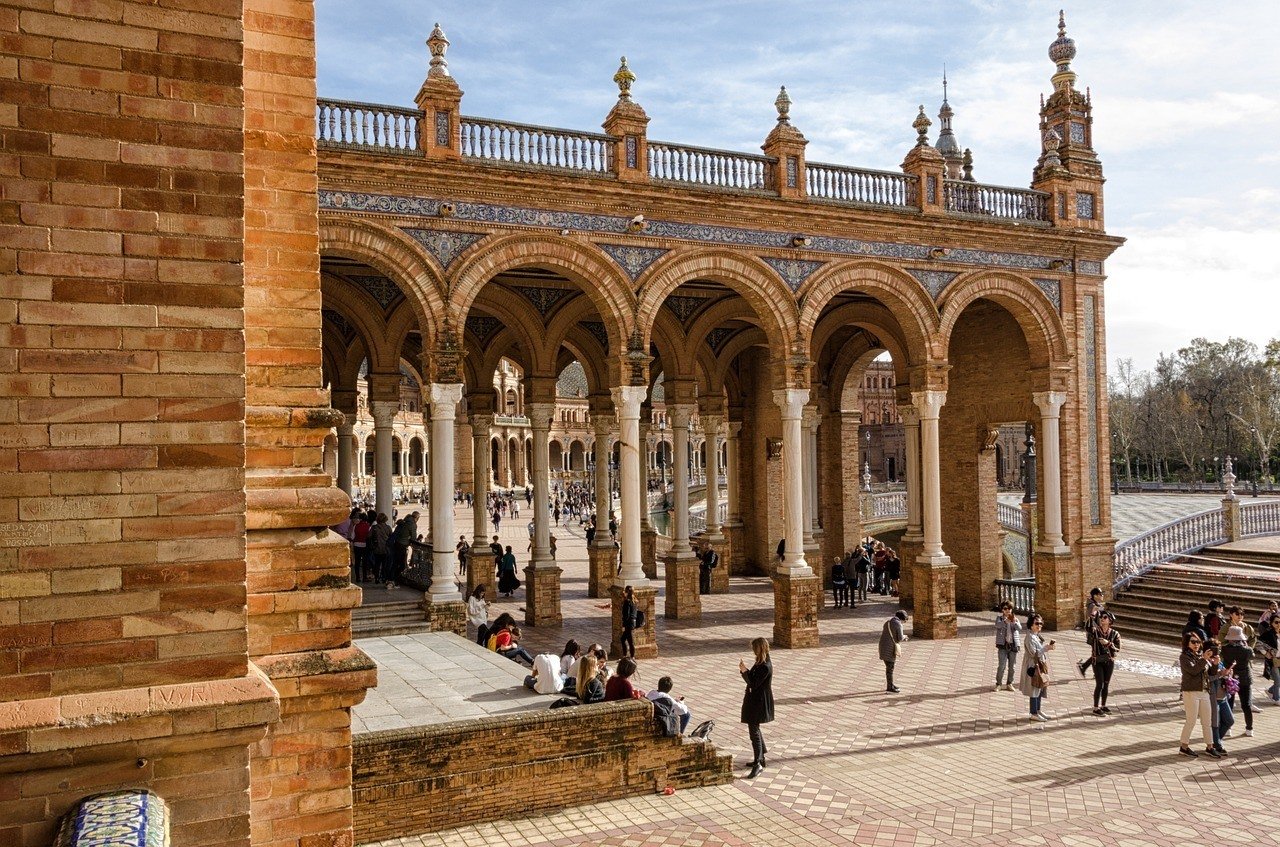
The Broke Backpacker is supported by you. Clicking through our links may earn us a small affiliate commission, and that's what allows us to keep producing free content 🙂 Learn more.
Triana and Los Remedios are the most trendy areas. They have tonnes of clubs, restaurants, and stores, making them full of fun and adventure! Despite the youthful atmosphere, it attracts people of all ages. Triana used to be a Roma neighborhood and remains energetic with flamenco clubs and bars. Los Remedios is very modern but quirky. It’s home to some of the best museums in Seville and some striking architecture!
The most popular neighborhood for visitors, though, has to be Barrio Santa Cruz. It’s the historic center of Seville that has most of the attractions on your Seville itinerary, such as the Seville Cathedral and the Real Alcazar. There’s a stylish, yet warm ambiance to this area. Narrow, cobblestoned alleys bypass towering Moorish-era landmarks, while orange trees are scattered around historic squares.
For more information, read through our AMAZING guide on where to stay in Seville in 2 days.
Best Hostel in Seville – Black Swan Hostel Sevilla
When you talk about quality for money, this is the place you should have in mind! The central location is top-notch and the hostel has a warm, stylish atmosphere. Each bed comes with a large locker, a powerpoint, and a lamp. Additionally, the hostel is also committed to eco-friendly practices!
There are some more INCREDIBLE options for hostels in Seville!
Best Airbnb in Seville – Room in renovated villa
This 500-year old beauty of a house is one of our favorite Airbnbs in Seville. It has three stories and is full of Spanish history and character. The room is your own private area, but the whole house is yours to explore and enjoy. Sit in the courtyard garden and enjoy your tea or coffee while listening to the trickle of the fountain. Enjoy a restful bath after a long day exploring the town.
Cook a meal in the rustic style, well-equipped kitchen. Take in the beautiful sunshine and orange-blossom-scented air of Seville on the rooftop terrace. From the house, you are a short walk to the major sights, such as Catedral de Sevilla (4 min walk), Jardines de Murillo (4 min), Museo del Baile Flamenco (6 min), Iglesia del Salvador (9 min), and many others – ideal base for a Seville City break.
Best Budget Hotel in Seville – Hotel Plaza
Hotel Plaza has to be the best place to stay in Seville if you’re on a budget! It’s centrally located, just 100m from the Plaza Nueva in Old Town. The rooms are spacious and comfortable, with modern and clean bathrooms. These kinds of facilities will set you up for a wonderful vacation in Seville!
Best Luxury Hotel in Seville – Hotel Palacio De Villapanés
This breathtaking combination of modern luxury and traditional features is the absolute best place to stay in Seville! It’s a converted 18th-century palace in Old Town that really lives up to royal standards! There’s a lovely rooftop terrace with a plunge pool and an in-house restaurant serving Andalusian food.
Want to save money on accommodation?
Enjoy 20% OFF on stays ALL around the world.
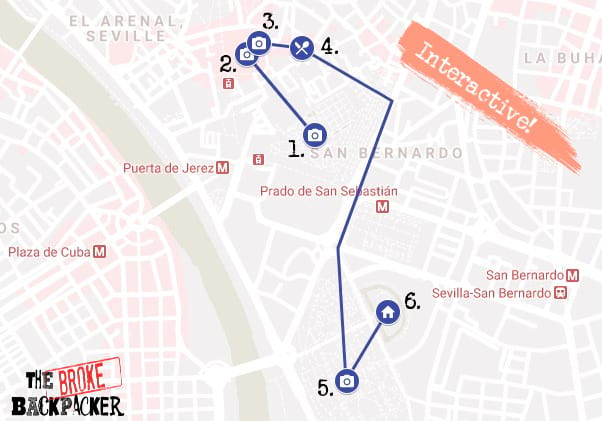
Today’s all about getting to grips with the most awesome Seville landmarks and soaking up the relaxed vibe of this city! With mosques that became cathedrals and colorful Moorish tiles giving way to Renaissance marble, you’ll see how various cultures and periods have left their mark on Seville.
Today’s itinerary is a packed one. It is doable but we suggest starting early and paying to skip the line at Real Alcazar.
9:30 AM – Real Alcazar
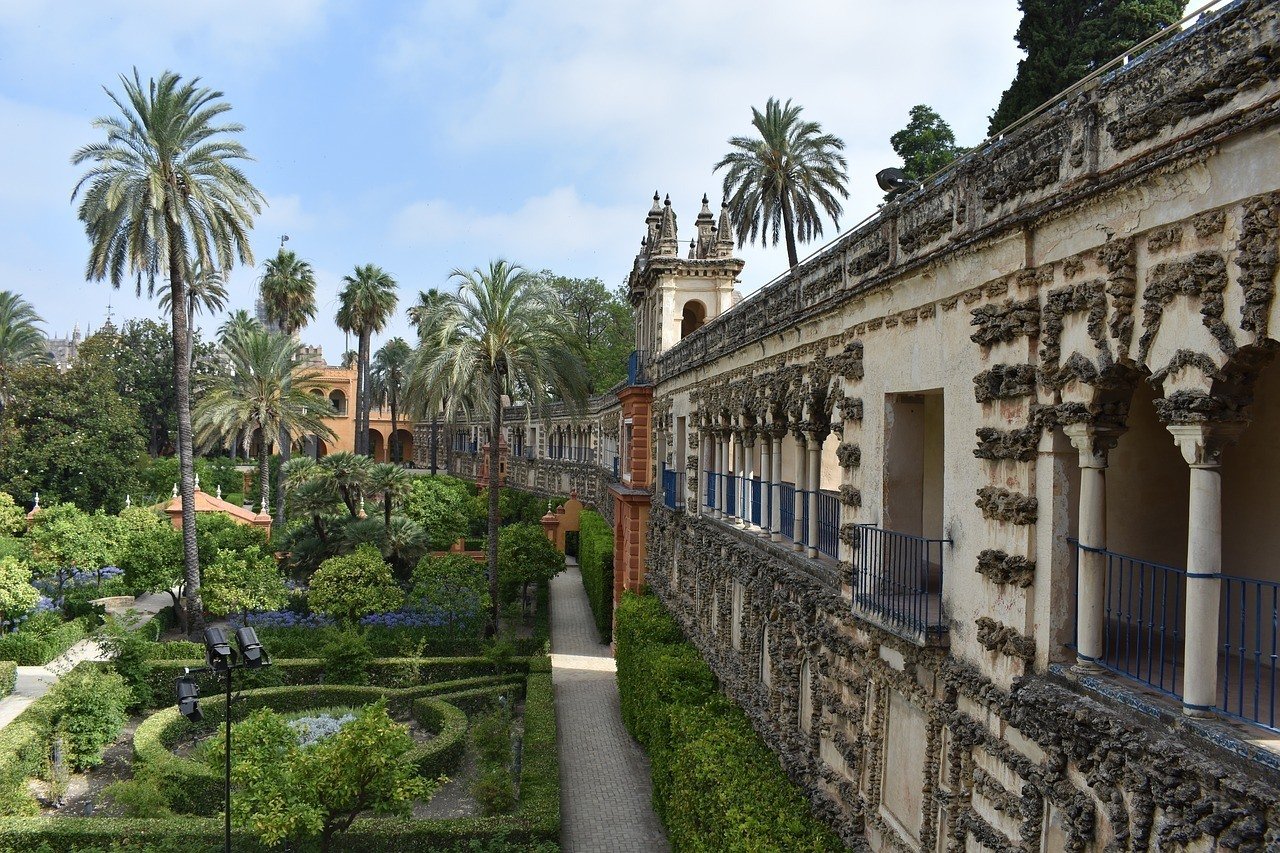
The Real Alcazar may be a historic site, but it is also one of sublime beauty! It was decorated with plasterwork, mosaics, and wooden coffered ceilings. These original features can still be seen, alongside Renaissance features. These include a tiled altar and a collection of tapestries depicting the Spanish conquest of Tunisia.
Be sure to find the dazzling Patio de las Doncellas, a courtyard renowned for its tiled pillars. Another beautiful courtyard is Patio de las Muñecas which features various decorated capitals. At the end of your visit, linger a bit longer in the spectacular palace gardens which boast impressive water features! If you’re looking for Instagram-worthy shots, you’ll find them here!
Only 750 people are allowed inside the palace complex at a time and preference is always given to those who have booked ahead. Buy your skip-the-queue tickets online. It’s also advisable to book a guided tour or add the audio guide for $7USD as there isn’t much information provided inside the palace.
- Cost: $13 USD for general admission and an extra $5 USD for entrance to the royal apartments
- How Long Should I Spend Here? 2.5 hours if you skip the line
- Getting There – Metro Line M1 to Puerta de Jerez
12:00 PM – Seville Cathedral
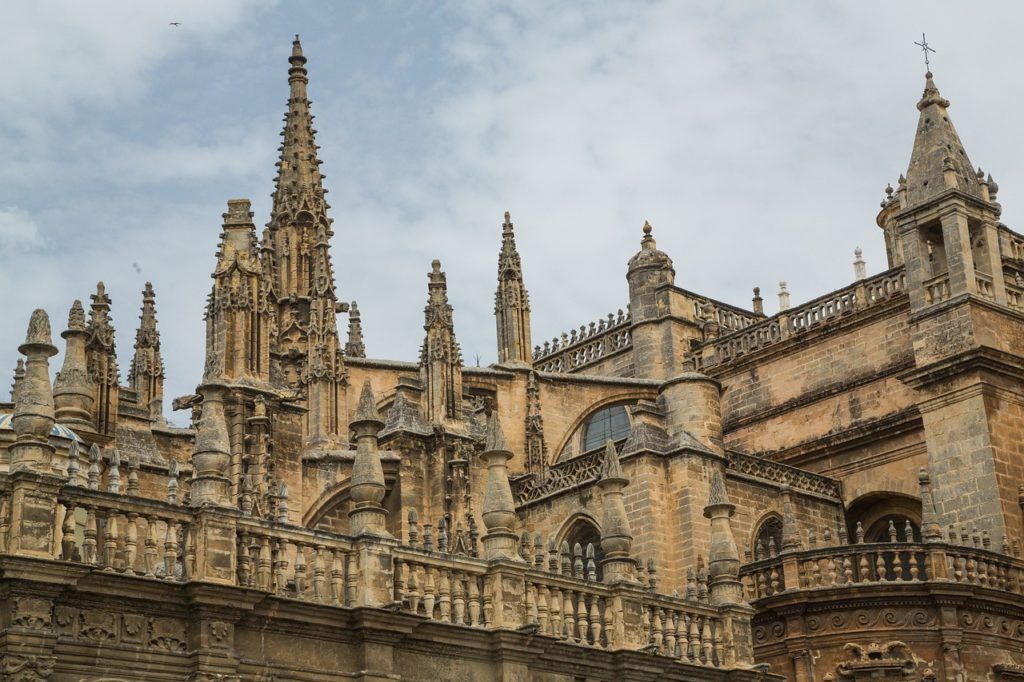
Seville Cathedral was originally a mosque until Islamic Seville was conquered by the Christian King Ferdinand III in the middle of the 13th century. He had the mosque converted into a church but the orange tree courtyard that you can visit today is a remnant of the original mosque!
The church was built in the Gothic style and was later renovated during the Renaissance and Baroque periods. The interior of the church is dark and spacious which gives it a serious hushed atmosphere! Your attention is immediately drawn to the dramatic vaulted ceilings and stained glass windows. One stained glass window, of the four evangelists, measures 9m and dates from the mid 16th century!
One of the highlights of the cathedral has to be the chance to visit Christopher Columbus’ tomb. That’s right, the great explorer’s here, too! His coffin is carried by life-size pall-bearers made of stone. It’s quite an impressive site!
In the Treasury, you’ll be left breathless by the sheer extravagance of the items, if not their beauty! Gold, silver, rubies, diamonds…you name it, it’s all here!
- Cost: $10 USD
- How Long Should I Spend Here? 1 hour will be plenty
- Getting There – It’s a 4 minute walk from the Alcazar
1:00 PM – La Giralda Bell Tower
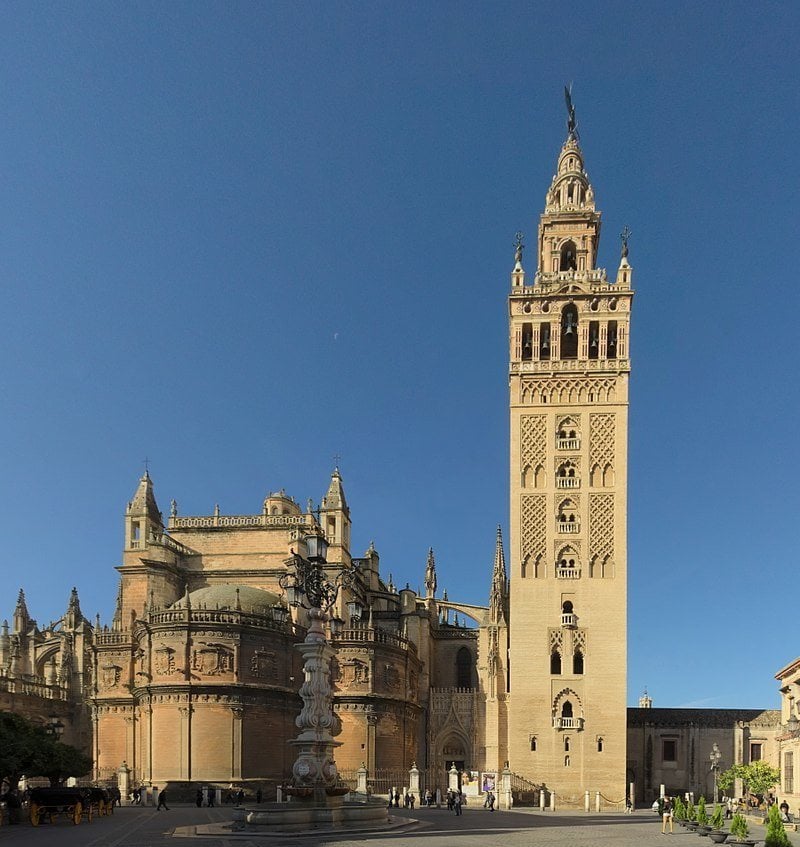
Photo: Ingo Mehling (Wikicommons)
La Giralda was originally built in 1195 as the minaret of the Aljama Mosque but was later converted to Seville Cathedral’s bell tower. At 103m tall, it was the tallest building in Seville for over 800 years!
Look closely (perhaps with a camera zoom!) at the weather vane on the top of the tower. This is where this Seville landmark gets its name: girar means “to turn” in Spanish. This statue, called El Giraldillo, represents faith. It’s now a UNESCO World Heritage Site!
Walk up the bell tower for spectacular views of Seville attractions and the cathedral’s architecture! Don’t be daunted by its height there are ramps inside which allow for a fairly comfortable ascent! The Giralda Tower is a marvel.
- Cost: Admission is included in the $10 USD fee for the cathedral
- How Long Should I Spend Here? 30 minutes
- Getting There – It’s next door to the Cathedral
2:00 PM – Lunch!
Just behind the cathedral you can’t miss the winding cobbled streets. Take some time explore this quaint area and duck in to a some of the boutiques and souvenir shops. You will also notice the fine aromas drifting out of the many cafe’s and taperia’s. Presuming you have worked up an appetite by this point in the day, sick one and dive in for some delicious lunch.
In case you need more specific direction, then I suggest yummy montaditos, small local sandwiches, at Bodega Santa Cruz. Go easy on the vino though as we still have more cool stuff to see! If it’s your first time in Seville then the culinary scene will blow your mind.
3:00 PM – Parque de Maria Luisa
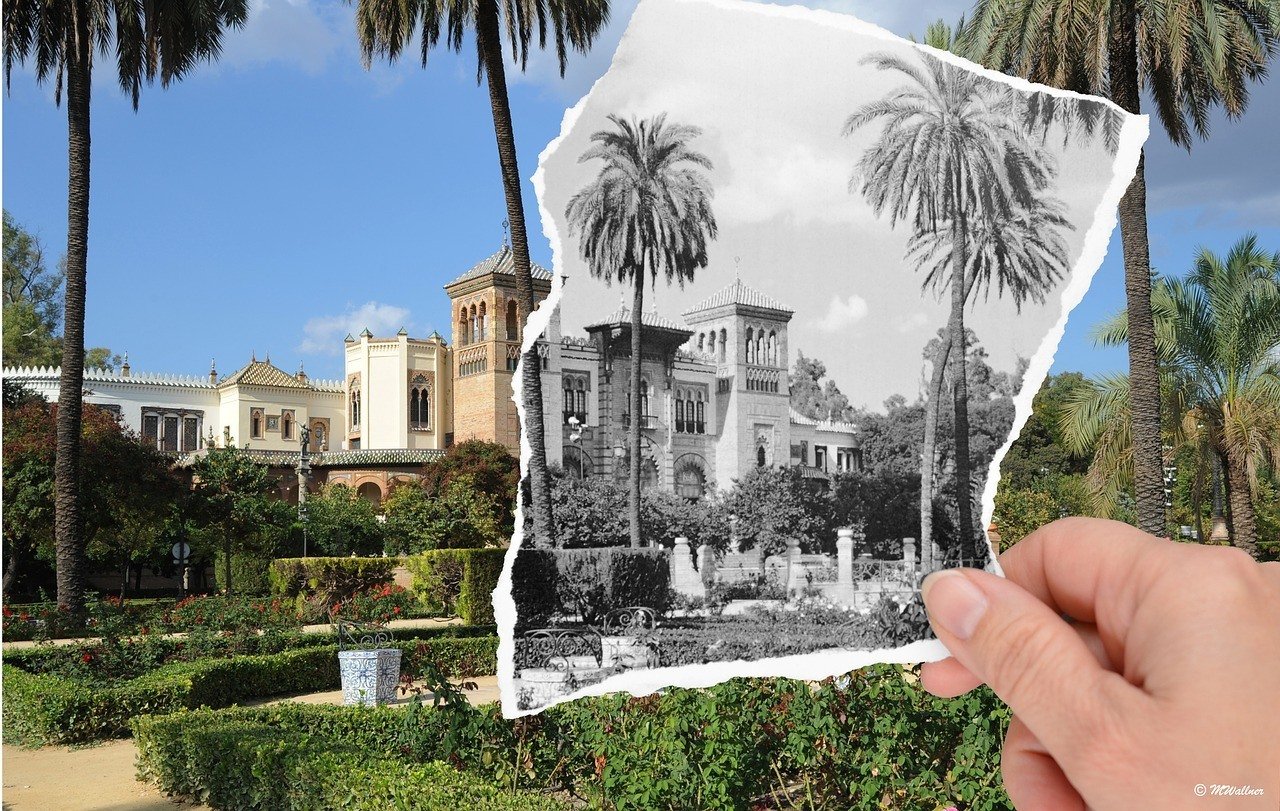
Alongside the meandering Guadalquivir River, French architect Jean-Claude Nicolas Forestier cultivated a lush public park to be the setting for the Ibero-American Exhibition in the early 20th century. The exhibition was intended to boost morale following the loss (of independence) Spanish colonies suffered by promoting the Andalusian industry. Times have since changed but the Parque de Maria Luisa does remain a cheering stop on any Seville itinerary!
The expansive park is perfect for a Seville walking tour of your own! There’s a pleasant, relaxing atmosphere as you stroll beneath the orange and palm trees beside the river. Be sure to find the statue of Miguel de Cervantes, the author of Don Quixote who was imprisoned in Seville, on the Plaza de America.
Bypassing colorful flowers, choose your favorite tiled bench or pavilion for a short rest to appreciate the gushing of nearby water features. Sit back and relax as one day in Seville begins to wind down. If you’re really looking to add some indulgence to your Seville itinerary, hail a horse-drawn carriage!
- Cost: Free!
- How Long Should I Spend Here? 30 minutes
- Getting There – Walk here – It’s 15 minute walk from the lunch stop
4:30 PM – Plaza de Espana
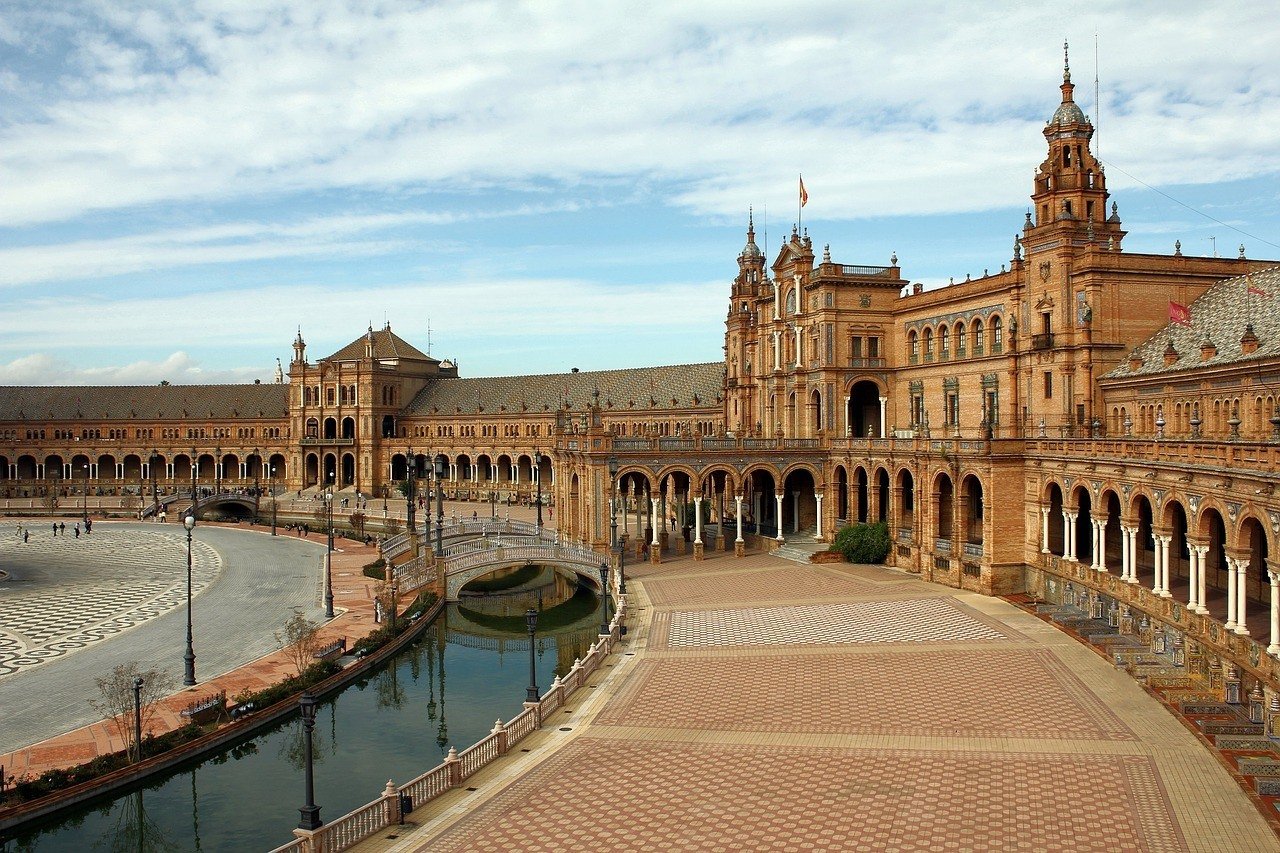
It may sound like a public square but Plaza de Espana is actually the monumental building you see in the midst of the Parque de Maria Luisa. It’s such an iconic landmark that you cannot travel to Seville without a visit here!
The monument may look centuries-old but it was actually only built in 1929 as the centerpiece of the Ibero-American Exhibition! It was designed to showcase Spanish accomplishments to the world.
Around the building is a moat on which visitors can row hired boats. There are four bridges crossing the water, each representing the old kingdoms of Aragon, Castille, Leon, and Navarre. 48 pavilions represent the 48 provinces of Spain. These are decorated with ceramic tiles to display Spanish craftsmanship.
This monument has since doubled as a film set and you may recognize it from Lawrence of Arabia or Star Wars: Attack of the Clones! Regardless, it should definitely be on your Seville itinerary as a leisurely visit to it is one of the most pleasant things to do in Seville, Spain!
- Cost: Free admission; $6 USD to hire a rowing boat for 45 minutes
- How Long Should I Spend Here? 60 – 90 minutes
- Getting There – Walk here – It’s 15 minute walk from the park
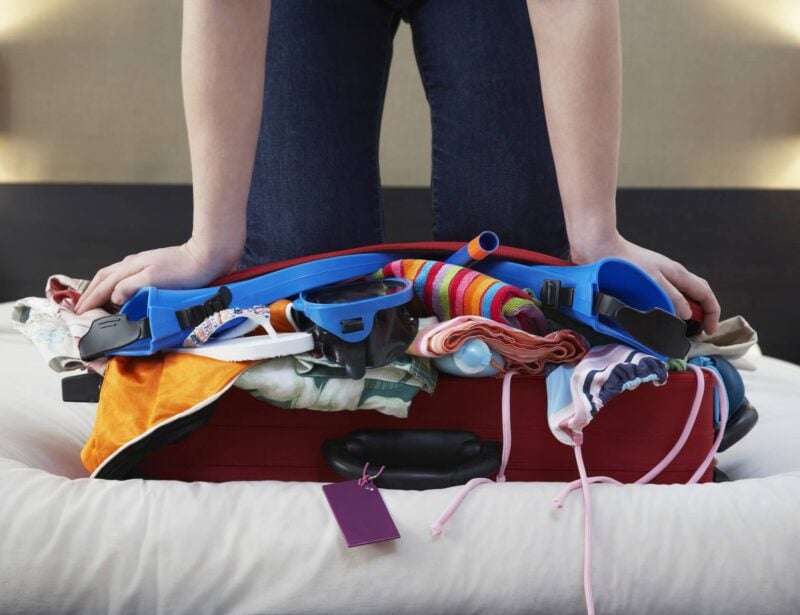
Wanna know how to pack like a pro? Well for a start you need the right gear….
These are packing cubes for the globetrotters and compression sacks for the real adventurers – these babies are a traveller’s best kept secret. They organise yo’ packing and minimise volume too so you can pack MORE.
Or, y’know… you can stick to just chucking it all in your backpack…
Get Yours Here Read Our Review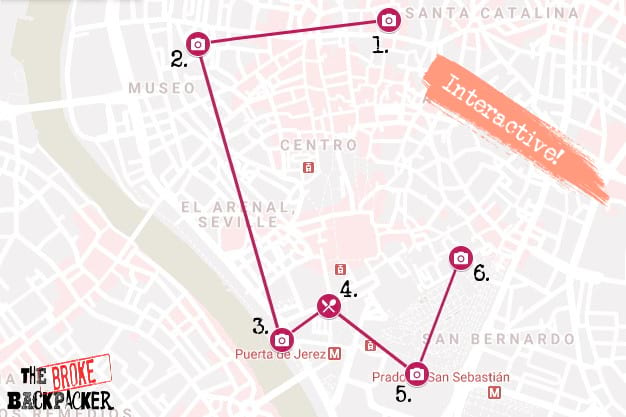
With our itinerary in Seville, it’s time to admire some more city views and to get up close to the cultural arena. You heard right, it’s Flamenco time!
10:00 AM – Metropol Parasol
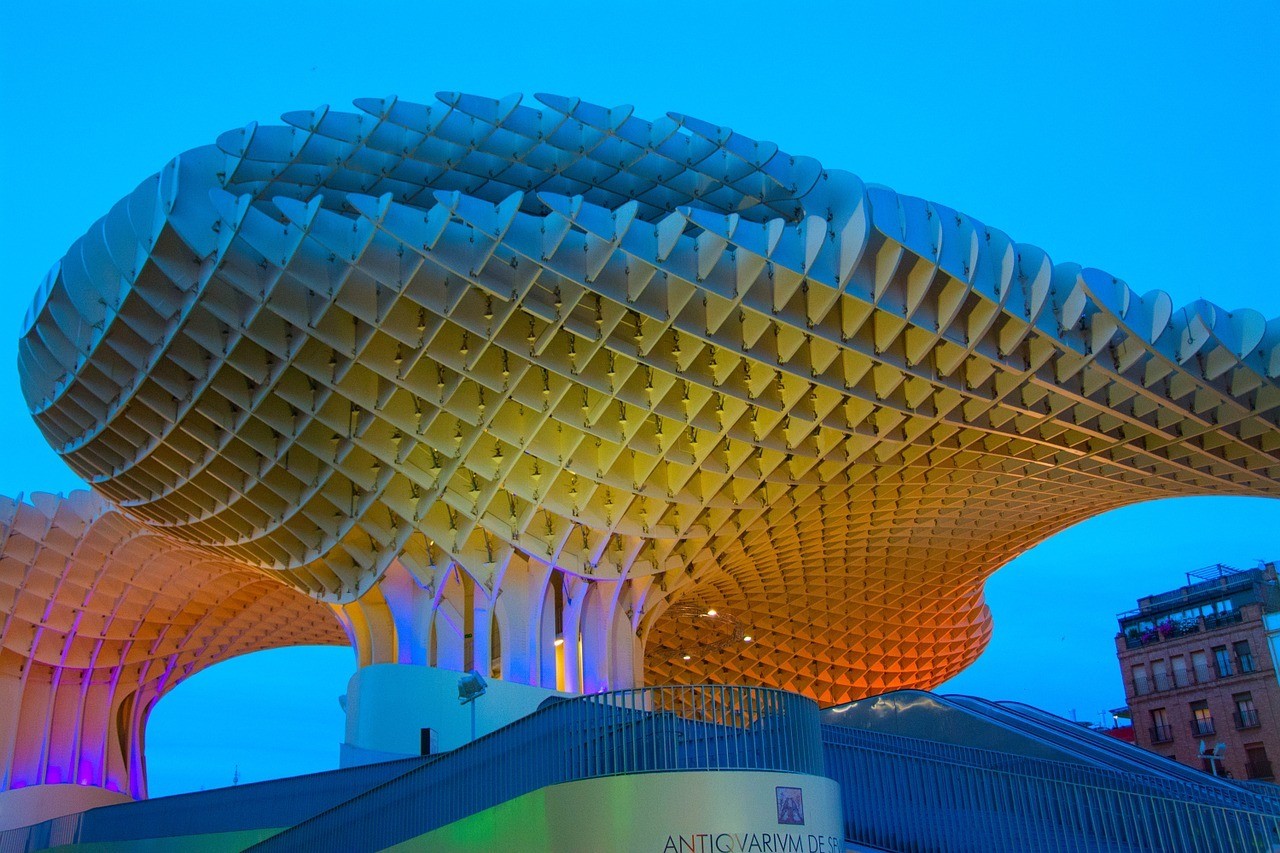
As thoroughly modern as the Seville cathedral is ancient, Metropol Parasol should be out of place in the historic Old Town. Somehow, though, it manages to fit right in! Its purpose is to provide shade but it’s also a popular monument in its own right that is a must see in Seville in 2 days.
It was designed by German architect Jürgen Mayer and completed in 2011. Ever since, Las Setas (The Mushrooms), as the locals call it, has been dividing opinion over whether it should even exist! You’ll likely be convinced of its worth, though, as soon as you take the elevator to the top level of the structure. The panoramic views are a highlight of any two-day itinerary in Seville!
On the ground level, Roman ruins and mosaics that were discovered on the site are housed in the Antiquarium of Seville.
- Cost: $3 USD
- How Long Should I Spend Here? 60 minutes
- Getting There – Walk here
11:30 AM – Museum of Fine Arts
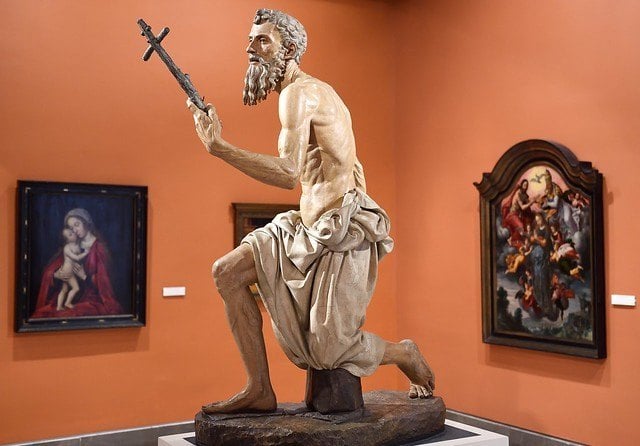
Photo: Tim Adams (Flickr)
Spain’s been home to some of the world’s most famed artists in history and with two days in Seville, it’s time you paid homage to some of their masterpieces! The Museum of Fine Arts was founded in 1835, and many think that the location alone is worth the entrance fee!
The museum houses a substantial collection of art from the Golden Age of Spanish painting in the 17th century. The most magnificent ones are hung in the former church. The star artist of this collection has to be Bartolomé Esteban Murillo. Look out for his Immaculate Conception which is a prime example of the physicality that’s typically present in Baroque art. Another luminous work of his is Saint Anthony of Padua with the Child.
Diego Velázquez, one of the most famous Spanish artists, was a local of Seville. Many of his early works can be found in the museum, most prominent of which is Don Cristóbal Suárez de Ribera.
As if that’s not enough, Spanish masters El Greco and Goya also have paintings here! If you have a weekend planned in Seville, Spain, this is a must-see!
- Cost: $2 USD
- How Long Should I Spend Here? 60 – 90 minutes
- Getting There – It’s a 20 minute walk from Metropol
1:00 PM – Torre del Oro
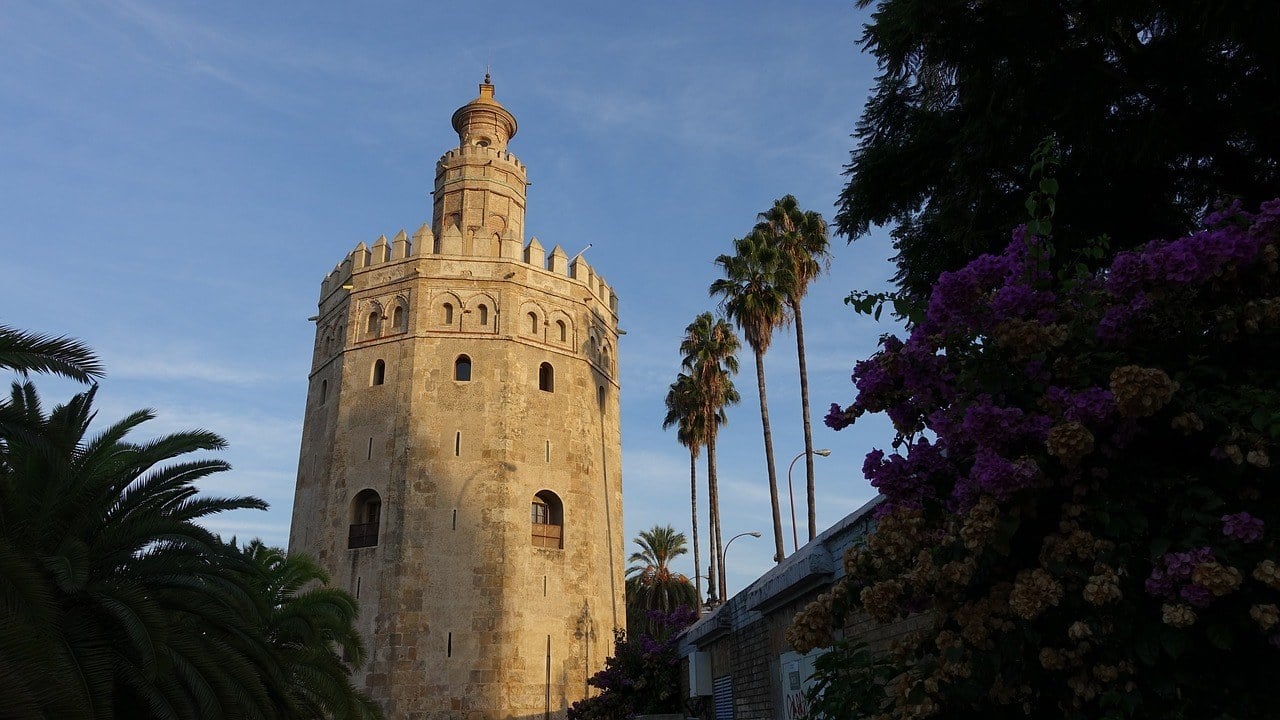
Torre del Oro means “Golden Tower” but this ancient landmark in Seville, Spain, is made of the usual brick! It was, however, coated in a mortar which, when hit by the sun, gave off a gold color. Sadly, this can no longer be seen but there are other treasures at the Torre del Oro!
Like so many Andalusian monuments, Torre del Oro shares both a Moorish and Spanish past. The tower was originally built under the rule of the Muslim Almohad dynasty as a part of the defenses along the Guadalquivir River. It was later conquered by the Christian Spanish. It suffered significant damage from an earthquake in 1755 and was restored by the passionate pleas of locals.
Today it houses the Naval Museum of Seville. There’s an exhibition on the history of the tower but the focus is on Spain’s glorious naval history. The rooftop terrace also boasts some of the best city views you’re likely to see while on your Seville itinerary for two days!
- Cost: $3 USD or free on Mondays.
- How Long Should I Spend Here? 60 – 90 minutes
- Getting There – It’s a 20 minute walk from Metropol
2:00 PM – Lunch at Restaurante La Casa del Tesorero
By now you should be hungry. Happily, there are plenty of places to eat near to our destinations. These range from Burgee King & The Hard Rock cafe all the way to the sublime, Italian gem that is La Case del Tesorero. The risotto’s are not to be missed.
3:00 PM – Royal Tobacco Factory
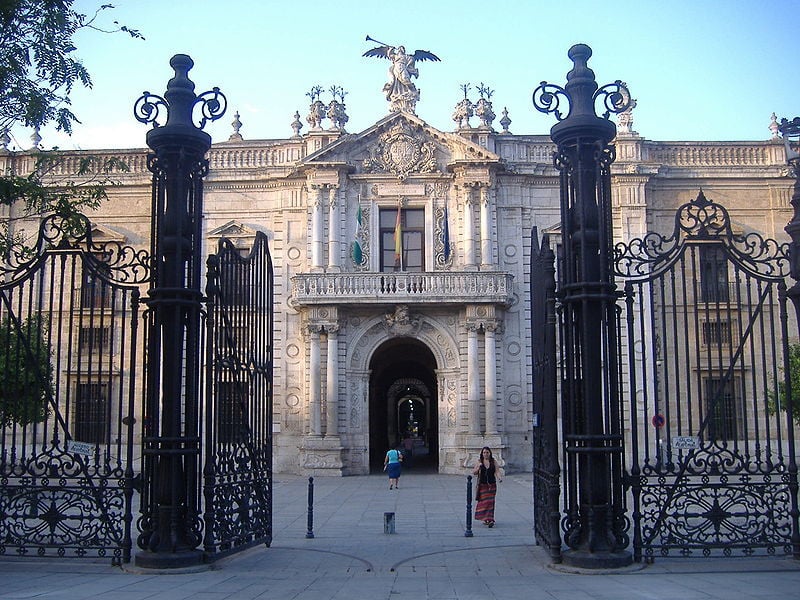
Photo: Carlosrs (Wikicommons)
It may seem like an unusual attraction to put on your itinerary but trust us when we say you’ll regret it if you don’t visit the Royal Tobacco Factory! It was Spain that introduced tobacco to Europe in the 16th century and the demand just kept growing. The factory even expanded to such an extent that it was the second largest building in the country! 75% of all cigars sold on the continent were produced here!
This is one of the most popular Seville attractions because of the beautiful architecture. It resembles a fortified palace, with a dried moat on three sides of the building. This was necessary since tobacco was such a valuable commodity. There was even a prison for tobacco smugglers!
The factory is also known as the setting of the opera Carmen where the leading character works and falls in love with a guard!
The tobacco factory was moved in the 1950s and today the building is home to the Hispalense University.
- Cost: $3 USD
- How Long Should I Spend Here? 60 minutes is plenty
- Getting There – Walk here
6:00 PM – Flamenco Dancing & Dinner
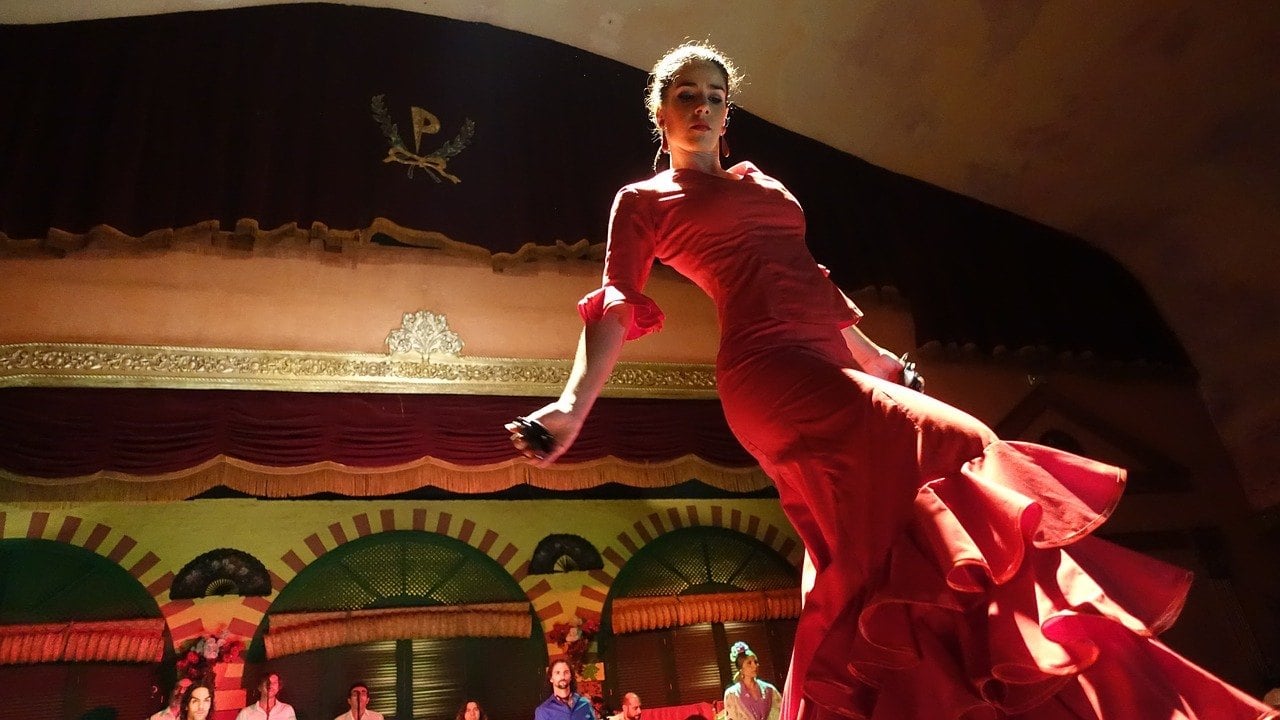
Flamenco originated in southern Spain and Seville offers visitors some of the best Flamenco dancing in the world! Originally, Flamenco involved only singing but it has since involved to include guitar and the flamboyant dance that’s loved around the world! Don’t fall for just any Flamenco show, though; make sure to follow our recommendations for an unforgettable celebration! This is one of the definitive things to do in Seville in 2 days.
Our favorite tablao has to be Los Gallos Tablao Flamenco. It’s one of the oldest in the city and is situated in a historic traditional house. This only enhances the authenticity of the Flamenco experience! For a modern twist, there are plenty of cocktails and sangria!
Casa de la Memoria is another sure bet for an epic Flamenco experience while touring Seville! The intimate environment is the setting for two shows daily and no day brings the same show! For those interested in learning, there are guitar and dance classes in Flamenco.
- Cost: Around $21 USD
- How Long Should I Spend Here? 2 – 3 hours
- Getting There – It depends which venue you choose
If you have 3 days in Seville or more, then there are a lot more must see’s. Let’s look at what to do with three days in Seville.
Archaeological Museum
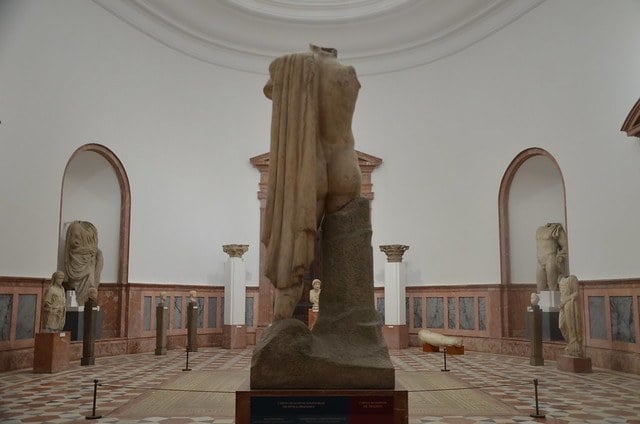
Photo:Carole Raddato (Flickr)
This airy building allows its various antiquities to speak volumes to an often mesmerized audience. The Phoenicians, Greeks, and Romans were all settlers of what is now Seville. Although the history of the area is traced through archaeological discoveries, the Roman period is the most well-documented.
Most of the Roman objects come from the nearby site of Italica. Look out for the Ecija Mosaic which dates from the 3rd century BCE! There are also sculptures of Emperors Trajan and Hadrian who were born in the region.
The Treasure of Carambolo is another popular collection in the museum. This dazzling collection replicates Phoenician gold artifacts made around 650 BCE!
Museo Palacio de la Condesa de Lebrija
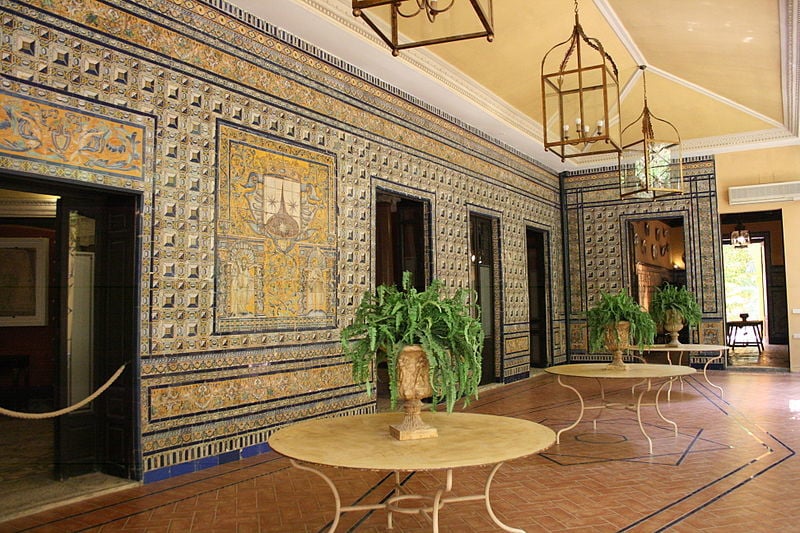
Photo: Michel wal (Wikicommons)
Merging Roman mosaics with Renaissance masonry, this palace is one of the most charming places to visit in Seville!
The ground floor houses the countess’ Ancient Rome collection which includes some of the best-preserved mosaics in Spain! The masterpiece of the palace is the Pan mosaic which awes visitors with its size. There are also marble statues and Etruscan ceramics.
To see the upstairs, you have to join a guided tour that’s included in the price since the family still use these rooms from time to time. It’s totally worth it for the chance to see Arabic, Baroque, and Spanish-style rooms! A bit of family history is also on display in the form of jewels and military medals.
Casa de Pilatos
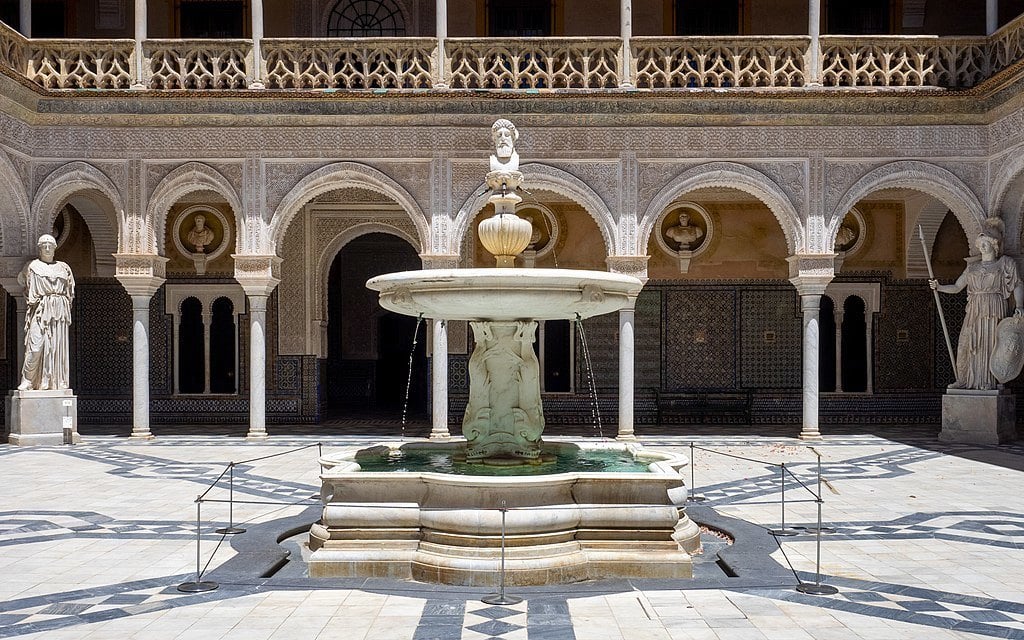
Photo: Ajay Suresh (Flickr)
This large private residence was built between the 15th and 16th centuries for an Andalusian mayor after his pilgrimage to Jerusalem. His revitalized piety was the inspiration for much of the house’s decor!
As time went by, the family expanded the palace and today it offers prime examples of the different architectural styles that have influenced Seville.
Make sure to visit the Chapel of Flagellation which is considered to be the oldest room in the building. Although it’s a chapel, it often gives the impression of being a mosque or a pagan temple due to the intricate mosaics and Roman sculpture on the altar!
The Casa de Pilatos was the first private house in Seville to have a staircase. It’s situated beneath a magnificent dome and is a stunning representation of local craftsmanship!
Visit Triana
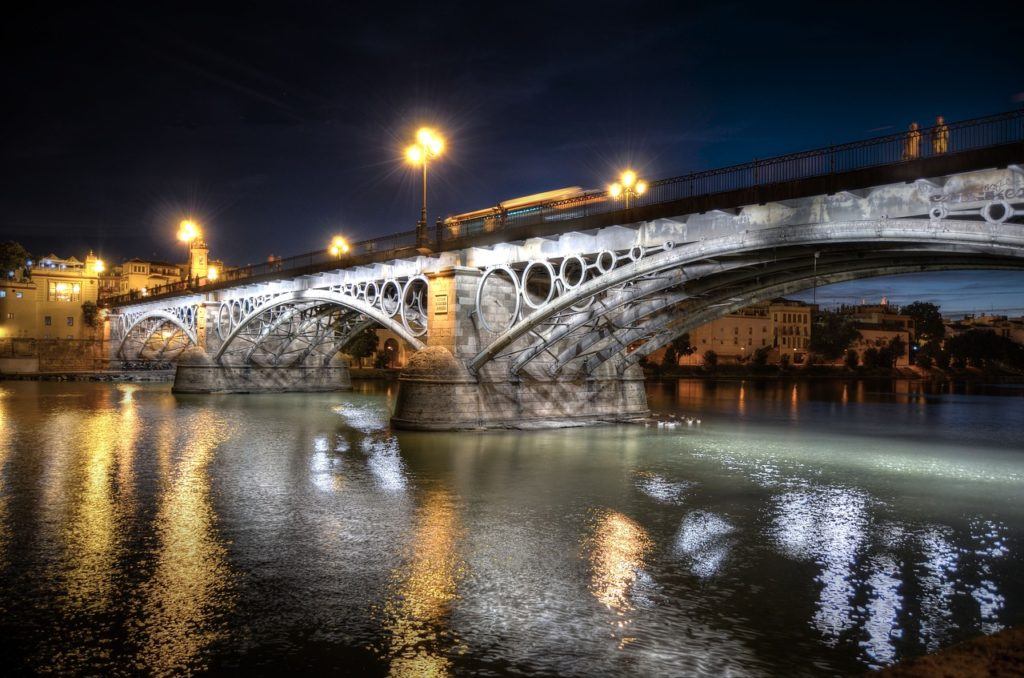
Start your Seville walking tour of Triana by crossing the Isabel II Bridge over the Guadalquivir River from Old Town. You’ll find yourself in Plaza Altozano. Here, a statue of local bullfighter Juan Belmonte stands before images of Virgin Mary painted on colorful buildings.
Triana’s home to a centuries-old ceramics industry due to the abundance of clay along the Guadalquivir River. It started with the Romans and flourished under the Moors who invented the azulejo, the little tile that used decoratively in nearly every grand building in Seville.
The business has since dwindled but there’s a lovely museum that continues to honor the craft. Centro Cerámica Triana not only documents Triana’s ceramic industry but also explains how various tiles were made. The city’s finest tile shop, Ceramica Santa Ana, is just next door. Having been in business for over 150 years, there’s not much chance of you leaving empty-handed!
Much of Triana’s historical population was Roma who would gather in communal courtyards forfestivities. When people say Flamenco came from Seville, it’s this tradition that they’re talking about! Triana has produced many brilliant Flamenco artists so pull up a chair and order a drink if you hear the music from a nearby bar!
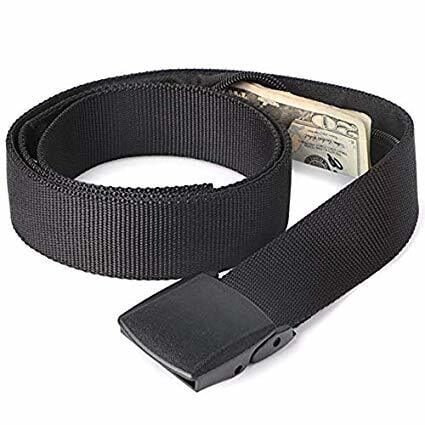
Stash your cash safely with this money belt. It will keep your valuables safely concealed, no matter where you go.
It looks exactly like a normal belt except for a SECRET interior pocket perfectly designed to hide a wad of cash, a passport photocopy or anything else you may wish to hide. Never get caught with your pants down again! (Unless you want to…)
Hide Yo’ Money!The weather in Seville, Spain, is generally quite lovely: think blissfully warm summers and mild winters. If you want to know when to visit Seville, bear in mind that the city’s sometimes called “the City for all Seasons” due to the mild climate!
Its inland location means that it’s one of the warmest cities in Europe. Come winter, many northern Europeans flock to the city, for this reason, Seville is seldom deserted.
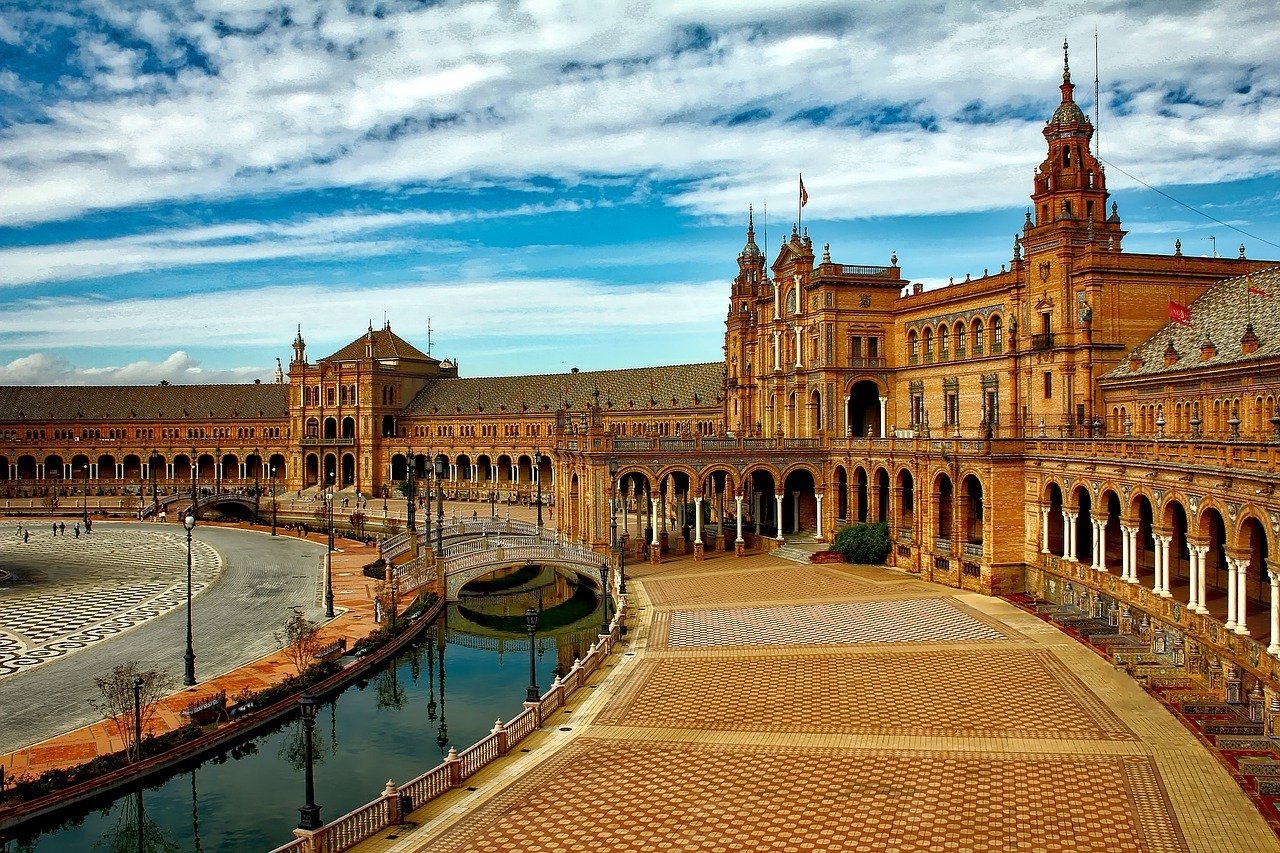
Peak season tends to run from April to August, although July and August can be unbearably hot. Things calm down in winter, except around Christmas festivities. When Easter falls at the end of March/beginning of April, the Semana Santa (Holy Week) and the Feria de Abril (a spring festival) cause crowds to swell and so do prices.
So, when should you visit Seville? Try to plan your trip to Seville so that you’re there in spring when the crowds aren’t too dense and the weather is pleasant!
| Average Temperature | Chance of Rain | Crowds | Overall Grade | |
|---|---|---|---|---|
| January | 15°C / 59°F | High | Calm | 😐 |
| February | 17°C / 63°F | Average | Calm | 😐 |
| March | 20°C / 68°F | High | Medium | 🙂 |
| April | 24°C / 75°F | Average | Medium | 😀 |
| May | 27°C / 81°F | Average | Medium | 😀 |
| June | 32°C / 90°F | Low | Busy | 🙂 |
| July | 36°C / 97°F | Low | Medium | 😐 |
| August | 36°C / 97°F | Low | Busy | 🙂 |
| September | 32°C / 90°F | Low | Medium | 😀 |
| October | 26°C / 79°F | High | Medium | 😐 |
| November | 20°C / 68°F | High | Medium | 😐 |
| December | 16°C / 61°F | High | Medium | 😐 |
Need a place quick? Here’s the best neighborhood in Seville
Santa Cruz
Santa Cruz is one of Seville – and Andalusia’s – most iconic neighbourhoods and one of the best area to stay in Seville. It is home to Seville’s most famous attractions, including the Real Alcazar, Seville Cathedral and the Plaza de Espana.
- Marvel at the Cathedral of Saint Mary of the See (the Cathedral of Seville), an impressive Roman Catholic cathedral.
- Climb to the top of Torre Giralda and take in the incredible views of the city.
- Explore the exceptional Real Alcazar, one of the finest examples of Moorish architecture in Spain.
How To Get Around Seville
Adding to the charm of your Seville itinerary, you’ll have to get around on foot for the most part! The abundance of tight alleyways and one-way streets make driving such a nuisance that few tourists bother to put up with car rentals. If you do, you’ll find the usual array of Avis and Europcar at the airport. Be warned, though, that parking is a nightmare unless your hotel comes with a garage!
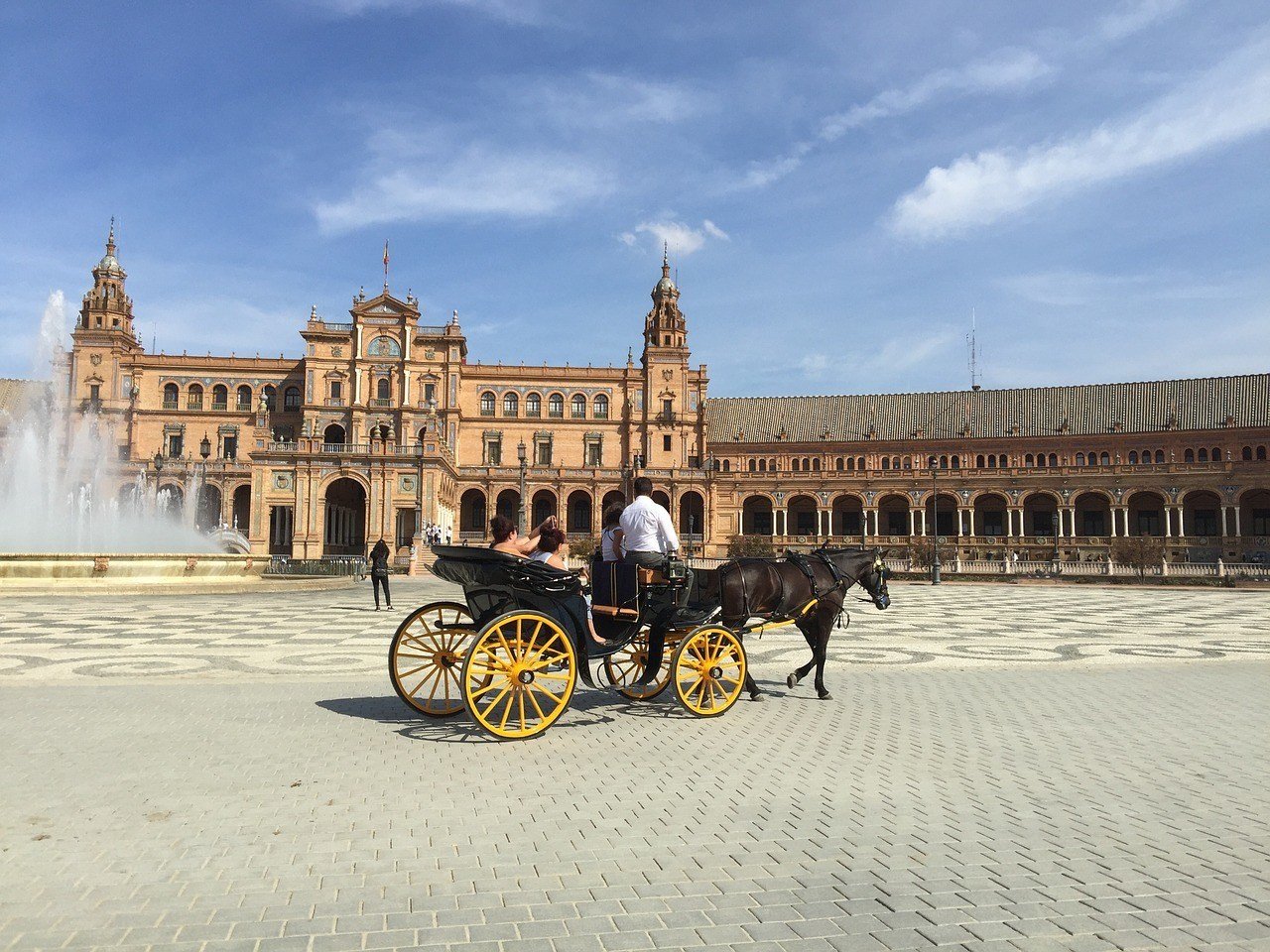
On the rare occasion that you can’t walk to an attraction on the Seville itinerary, turn to the city’s bus network. Tickets can be bought at stations, kiosks, or on the bus. It’s USD $2 for a standard ticket, but it’s more cost-effective to purchase a three-day pass for USD $12. This will cover all your transport needs as you hop around and wonder what to do.
Taxis are another reliable option to get around the city. You’ll find them across the city. It’s a flat rate of $29 from the airport to the city center.
Don’t worry too much about safety when planning a trip to Seville! There’s generally little violent crime but there are common scams and pickpocketing that you should watch out for.
When you’re in crowded places like the Seville Cathedral or the Real Alcazar, keep your valuables close to your person. Forget your back pockets and only use your front pockets. Avoid deserted ATMs that look broken – they may be rigged to steal from you. These are just a few of our tips that will keep you safe on your Seville itinerary.
To prevent being completely stranded if you are robbed, keep copies of all your important documents, like your passport, apart from the originals.
It’s also common for women to give you rosemary, offer to read your palm and then demand money. It’s rather a hassle, so say ‘no’ upfront if you’re not into it.
Don’t Forget Your Travel Insurance for Seville
ALWAYS sort out your backpacker insurance before your trip. There’s plenty to choose from in that department, but a good place to start is Safety Wing.
They offer month-to-month payments, no lock-in contracts, and require absolutely no itineraries: that’s the exact kind of insurance long-term travellers and digital nomads need.
SafetyWing is cheap, easy, and admin-free: just sign up lickety-split so you can get back to it!
Click the button below to learn more about SafetyWing’s setup or read our insider review for the full tasty scoop.
FAQ on Seville Itinerary
Find out what people want to know when planning their Seville itinerary.
Final Thoughts
Seville revels in rich history which has both spectacular architecture and cultural traditions. From the lavish Real Alcazar to the soaring La Giralda Bell Tower, there are many beautiful sites to see this in Seville!
The magic of Seville, though, lies in its charming culture! Church bells ring out across squares and the iconic Flamenco clap calls many to the nearest bar. From the vibrant hues of Triana’s buildings to the abundance of flowers in the Parque de Maria Luisa, you’ll be struck by the volume of color.
As you eat your way through tapas and inhale the nutty Andalusian wines, you’ll often have views of the medieval cathedral or the modern cityscape. This kind of sensory experience is the real attraction that will make Seville your new favorite city! Start packing for Spain and book your accommodation.
Combining the rich history of Seville with its equally rich cultural scene is no easy task but our selection of what to do will make your trip as effortless as possible! For even more Seville inspo checkout this guide by The Spain Travel Guru!
Buy Us a Coffee!
A couple of you lovely readers suggested we set up a tip jar for direct support as an alternative to booking through our links. So we created one!
You can now buy The Broke Backpacker a coffee. If you like and use our content to plan your trips, it’s a much appreciated way to show appreciation 🙂


